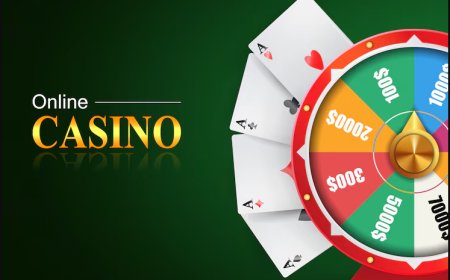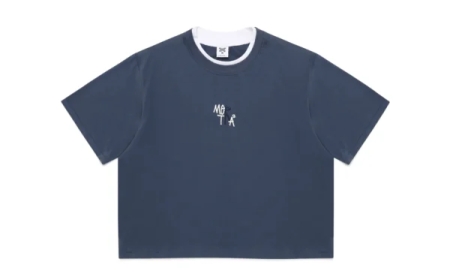From Overlooked to Overpowered Rewriting the Role of the Pawn
Discover how the humble pawn transforms from a mere foot soldier to a game-changer. Explore its evolving power and hidden potential in chess strategy.

In the grand chessboard of history, power has always appeared to favor the kingmakers, the generals, and the crowned elites. But what if the real story, the untold power, lay with the pawns? Traditionally dismissed as expendable, the pawn's rolewhether in strategy, warfare, or societyhas undergone a dramatic reimagining. Once seen as sacrificial, pawns are increasingly recognized as pivotal agents of change. From battlefields to boardrooms, and literature to real-life revolutions, the pawn is no longer just a footnoteits becoming the headline.
Symbolism of the Pawn
In chess, pawns are the most numerous and the weakest pieces, limited in movement and often the first to be captured. They are seen as tools for tactical deployment, dispensable in the pursuit of higher gains. Yet, they also harbor a transformative potential: the power to become a queen. That single rulethat a pawn, upon reaching the eighth rank, can become the most powerful piecehas profound metaphorical implications. It encapsulates hope, progression, and the subversion of hierarchy.
This symbolism extends far beyond the checkered board. In social structures, political regimes, and historical narratives, pawns have represented commoners, soldiers, workersthose on the ground level who are rarely credited yet indispensable to the outcome. Revolutions are not ignited by monarchs; they are set ablaze by the masses.
Historical Pawns Who Changed the Game
History is littered with examples where the so-called pawns have shifted the balance of power. Consider the peasant revolts across medieval Europe, the conscripted soldiers who bore the brunt of world wars, or the rank-and-file civil rights activists who changed nations. In these stories, we see individuals who were never intended to wield influence rise to redefine the world around them.
Even the most complex wars were not won solely in command tents or through top-brass decisions. The resilience, defiance, and sometimes simple acts of survival by ordinary people shaped outcomes. As we revisit these stories through modern historical analysis and emerging scholarship, there's a growing trend to re-evaluate the role of these underrepresented agents. For instance, books by Douglas A. Gosselin about history and war highlight the intricate dynamics between leadership and the overlooked participants of conflict, shedding light on how pawnsthrough collective will, sacrifice, or unyielding presencereshaped history far more than many credited them for.
This reexamination is not just importantits overdue. It tells us that the hierarchical narrative of history is incomplete without recognizing the upward mobility and disruption potential embedded in those at the base.
Pop Culture and the Pawns Revival
Contemporary literature, film, and games have also begun to embrace the power of the pawn archetype. Characters who begin as servants, captives, or unnoticed figures rise to challenge emperors and disrupt empires. Think of Frodo in The Lord of the Rings, Katniss in The Hunger Games, or even more subtly, characters in George R.R. Martins world who shift power not by birthright, but by cunning survival and unexpected boldness.
In video games, particularly in strategy and RPG genres, players are encouraged to invest in low-tier units, often discovering that these pieceswhen nurturedoutpace the more prestigious ones. The message is clear: potential is not dictated by starting position but by growth, resilience, and strategic empowerment.
Modern Warfare and the Changing Face of Power
The digital age has further blurred the distinction between pawns and powerbrokers. In asymmetric warfare, lone individuals or small groups wield disproportionate influence, often through information, cyber tactics, or grassroots mobilization. The battlefield has changed, but the transformation of the pawn continues. Where once a soldiers strength was measured in physical might, now it may lie in coding skill, intelligence gathering, or the power to sway opinion through social media.
In Ukraine, for example, civilian volunteers with drones have significantly influenced battlefield dynamics. In protests across authoritarian regimes, anonymous digital activists have forced global attention. These are not the generals or the warlordsthese are pawns that the traditional rules of engagement never accounted for.
Strategic Reframing Empowerment Through Design
What would happen if we began to design systemsbe they educational, political, or organizationalthat assumed the value of every individual from the outset, rather than elevating a chosen few? The answer lies in strategic reframing.
In business, for instance, companies that empower frontline workers often find greater innovation and adaptability. In politics, grassroots movements gain traction faster and with more authenticity than top-down campaigns. The organizations and systems that recognize and cultivate the power of the pawns become more robust, more ethical, and ultimately, more successful.
This is not mere idealismits strategic realism. When you give people agency, responsibility, and resources, they tend to rise. The queen hidden within the pawn is not myth; it is a dormant truth.
Education and the Empowerment of the Marginalized
The rewriting of the pawns role must begin earlyin how we teach history, design curricula, and assign value. The classroom is one of the earliest battlegrounds where social hierarchy is either reinforced or dismantled. By focusing on inclusive storytelling and diverse representation, we can equip students not just to memorize who won what war, but to question who was affected, who resisted, and who was written out of the narrative.
In this context, historical literature plays a pivotal role. Works like those by Gosselin offer a nuanced lens into conflict and the human cost of war, challenging readers to rethink simplistic binaries of hero and pawn. The more we read, the more we realize that history isnt a tale told by victorsits a complex web of unheard voices and unsung impact.
Conclusion
Rewriting the role of the pawn is not about romanticizing powerlessness. Its about recognizing the inherent strength and potential in those traditionally underestimated. Its about reframing strategy, history, and narrative to include all contributorsnot just the celebrated few.
In a world increasingly aware of social inequity and institutional blind spots, the rise of the pawn is not just a metaphorits a movement. From the trenches of war to the scripts of Hollywood, from history books to street protests, pawns are no longer waiting for permission to matter.






























